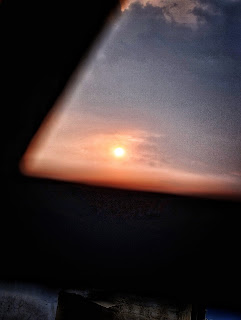Night photography is a captivating genre that allows photographers to explore the beauty of the world after dark. It's a realm of creativity where ordinary scenes are transformed into extraordinary visions. In this comprehensive guide, we'll delve into the realm of night photography, covering essential tips, techniques, and addressing common FAQs to help you unlock the magic of the night.
Night Photography Equipment
The first step in night photography is having the right gear. Here's what you'll need:
1. Camera: A DSLR or mirrorless camera is ideal for night photography due to its manual settings and low-light capabilities.
2. Lenses: Fast prime lenses with wide apertures (e.g., f/1.4 or f/1.8) are excellent for gathering more light.
3. Tripod: A sturdy tripod is essential to keep your camera stable during long exposures.
4. Remote Shutter Release: This minimizes camera shake when taking long-exposure shots.
5. Flashlight: Useful for focusing in the dark without disturbing the scene.
Camera Settings
Night photography often involves long exposures, so it's crucial to understand these settings:
1. ISO: Use a low ISO (e.g., 100-400) to reduce noise.
2. Aperture Start with a wide aperture (e.g., f/2.8) to gather more light.
3. Shutter Speed: Experiment with longer exposures (e.g., 15-30 seconds) for light trails or starry skies.
Techniques for Captivating Night Shots
Long Exposure
Long exposures are a hallmark of night photography. They allow you to capture the play of light and movement in the dark. Use a tripod, a low ISO, and a narrow aperture for stunning results. Experiment with various shutter speeds to achieve different effects.
Light Painting
Light painting involves using a flashlight or other light sources to illuminate specific parts of your scene during a long exposure. This technique can create unique and surreal images.
Astrophotography
To photograph stars, use a wide-angle lens, a high ISO, and a long exposure. Find a location away from city lights for the best results. Consider using a star tracker to capture detailed starry skies.
Urban Nightscapes
Cityscapes come alive at night with the glow of streetlights and buildings. Use a tripod, a wide-angle lens, and a low ISO to capture the city's energy. Experiment with different angles and compositions.
1. How do I focus in the dark?
Use manual focus and a flashlight to illuminate your subject. Adjust the focus until it's sharp, then switch off the autofocus to prevent it from changing during the shot.
2. How can I reduce noise in night photos?
- Keep your ISO as low as possible to minimize noise. If necessary, use noise reduction software during post-processing.
3. What is light pollution, and how can I deal with it?
- Light pollution is the brightening of the night sky due to artificial light sources. To combat it, shoot in areas with less light pollution, or use light pollution filters on your lens.
4. How can I capture star trails?
- To capture star trails, set your camera to bulb mode and take a long exposure (typically 30 minutes to several hours). Use a tripod and a remote shutter release.
5. How do I photograph the Milky Way?
Find a dark location away from city lights. Use a wide-angle lens with a fast aperture (f/2.8 or wider) and a high ISO. Experiment with different exposure times.
6. What safety precautions should I take when shooting at night?
- When shooting in the dark, especially in remote areas, let someone know your location and expected return time. Carry essential safety gear like a flashlight, warm clothing, and a fully charged phone.
7. How can I create light trails in my photos?
- To capture light trails from moving vehicles, use a tripod and a long exposure. Set up your camera near a busy road or highway, and adjust your settings to achieve the desired effect.
Night photography is a mesmerizing realm of creativity where ordinary scenes are transformed into extraordinary visions. Armed with the right equipment and techniques, you can capture the beauty and magic of the night. Whether you're shooting cityscapes, starry skies, or experimenting with light painting, the world of night photography is full of opportunities to express your unique vision. So, grab your camera, a sturdy tripod, and embrace the enchanting world of night photography. The night is your canvas, and the possibilities are endless














